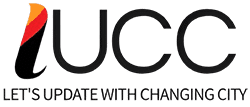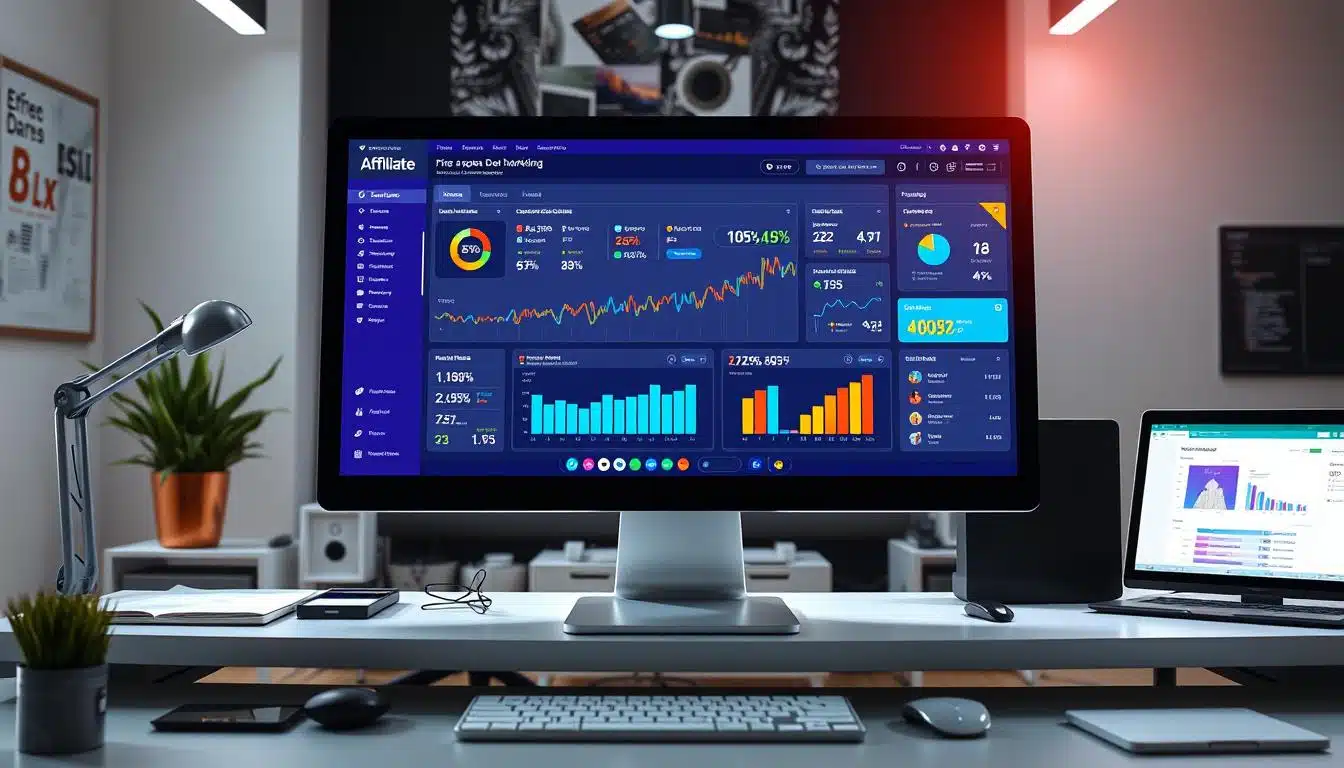When you talk about your marketing success, you might think of impressions, clicks, and conversions. But, when you really want to know how well your marketing works, you look at revenue. This shows a deeper side of marketing: understanding what leads do, think, and do, from many sources, online and offline.
In this article, we’ll see how call tracking can boost your ROI. We’ll give you steps to use this tool effectively. With call tracking, you can make better choices, improve your marketing, and get more sales.
Key Takeaways
- Call tracking lets you know which marketing efforts bring in calls.
- Tracking software shows which channels get the most calls, helping you use your resources wisely.
- Call tracking data helps you see how many calls it takes for a lead to convert, showing the customer’s path.
- Dynamic Number Insertion (DNI) helps track calls to specific marketing sources, campaigns, ads, and keywords.
- Call recording gives insights into customer feelings, common questions, objections, and how calls are handled.
What is Call Tracking?
Call tracking is a tool that lets marketers watch and study incoming calls. It’s more than just who’s calling; it shows where the call came from, the caller’s path on your site, how long they talked, and if they made a purchase. This helps businesses see which marketing efforts bring in the most valuable leads and sales.
For marketers, call tracking connects online and offline marketing. It helps them see how well their campaigns are doing, whether it’s an ad online or a billboard. This info lets them make their marketing better and use their budget wisely.
Forrester says 84% of marketers think phone calls are more effective, with higher average order values, than other ways to engage. Many industries, like cars, health, and real estate, use call tracking to their advantage.
| Key Benefits of Call Tracking | Metrics Tracked |
|---|---|
|
|
“Call tracking bridges the gap between online and offline marketing, ensuring that every customer interaction counts toward understanding phone call ROI.”
Key Metrics: Decoding the Real Impact of Phone Calls
It’s key to understand call tracking metrics to see how phone calls boost your marketing ROI. Call volume shows how many calls each marketing channel gets. But, it’s the conversion rate that really matters. This rate tells you how many calls turn into sales or desired actions.
Average call duration gives clues about customer interest. Longer calls often mean a higher chance of converting. Also, knowing if calls are from first-time callers or repeat callers helps see if you’re attracting new or keeping old customers.
By looking at these metrics and others like caller demographics and peak call times, marketers can improve their phone call ROI. This helps make their campaigns more successful.
Understanding Key Call Tracking Metrics
Call tracking data offers insights into your marketing and customer behavior. Key metrics to watch include:
- Call Volume: The total number of calls, showing demand for your products or services.
- Conversion Rate: The percentage of calls that lead to a desired action, like a sale.
- Average Call Duration: The call length, showing how engaged customers are.
- First-Time Callers vs. Repeat Callers: The ratio of new to returning customers, showing marketing effectiveness.
- Caller Demographics: Insights into caller age, gender, location, and more, helping tailor marketing.
- Peak Call Times: When you get the most calls, helping plan staffing and resources.
By tracking these metrics closely, businesses can understand their customers better. This leads to better decision-making and higher marketing ROI.
“81% of customers repeat purchases when they experience positive customer service, boosting brand loyalty.”
Calculating Call Tracking ROI
It’s key to measure the return on investment (ROI) of your call tracking efforts. This helps justify its use and improve your marketing strategy. Here’s how to calculate the call tracking ROI:
- First, find out the total cost of your call tracking system and any marketing campaigns.
- Then, track the leads from phone calls and see how many became paying customers.
- Next, value each conversion by looking at the average customer lifetime value or sale amount.
- After that, calculate the total revenue from calls. Subtract the costs of the system and marketing to find the net profit.
- Lastly, divide the net profit by the total cost and multiply by 100 to get your ROI percentage.
This method shows the financial gains of call tracking in your marketing. It helps you make smart decisions and get the most from your investment.
| Metric | Value |
|---|---|
| Total Cost of Call Tracking System | $45 per month |
| Total Leads Generated from Phone Calls | 500 |
| Conversion Rate | 25% |
| Average Customer Lifetime Value | $500 |
| Total Revenue Generated | $62,500 |
| Net Profit | $61,800 |
| ROI Percentage | 137% |
Using call tracking data, you can measure the call tracking ROI, marketing ROI, and lead generation ROI of your campaigns. This lets you make informed choices and improve your strategies for better results.
Activate Dynamic Number Insertion
Dynamic Number Insertion (DNI) is a cutting-edge call tracking solution. It gives unique phone numbers to each website visitor. This tech lets you know exactly where calls come from, like ads or keywords.
Benefits of Dynamic Number Insertion
Using DNI on your site opens up a world of insights. It helps you make your marketing better and get more from your spending. Here are some main benefits:
- Granular Attribution: DNI tracks each call’s source, like a campaign or ad. This helps you see which marketing works best and spend wisely.
- Enhanced ROI Measurement: It connects online marketing to phone calls. This lets you see how well your campaigns do and make smarter choices.
- Personalized User Experience: DNI gives each visitor a unique phone number. This makes your service feel more personal and builds stronger customer bonds.
- Comprehensive Analytics: Tools like Nimbata give deep insights into calls. You learn about call length, where calls are from, and more. This helps you understand your customers better.
DNI is a step up from old call tracking methods. It gives you precise data to make smart choices. By using it, you can get the most out of your dynamic number insertion, dynamic number assignment, call source attribution, and call tracking data.
Set up Call Recording
Call recording is more than just tracking calls. It gives insights into what customers say and what questions they ask. It also shows how well your sales team handles calls. By linking call tracking with CRM software, you get a full view of how customers interact with your business.
Listening to call recordings helps you see how your agents do on calls. It shows if they need more training. It also helps you understand the quality of your leads better.
Forrester says 82% of marketers find big gaps in their sales process from call data. Yet, 60% of companies don’t track the right data to turn prospects into customers. MyMedLeads call tracking software gives you the tools to see how customers behave and improve your sales.
“Acquiring a new customer can be 6 to 7 times more expensive than retaining an existing one.”
Call tracking helps you know who’s bringing in leads, making you stand out. Training your sales team with call data can really boost their performance. Looking at call data for trends can make your marketing and customer service better.
MyMedLeads gives you 10 free call-tracking numbers for ads right away. You can add more numbers easily and affordably. It makes entering caller info automatic and sends desktop alerts for calls, with all the lead data you need.
MyMedLeads records calls for quality checks and training. It gives detailed reports on call sources, campaign success, staff performance, and conversion rates. It tracks response times, call length, and follow-up habits for staff reviews. Insights from calls help improve phone skills and fix marketing gaps.
Call tracking is key for seeing how offline ads like radio, TV, and print work. MyMedLeads analytics help you track ROI for both online and offline ads.
call tracking marketing
In the fast-paced world of digital marketing, call tracking has become a key tool. It gives businesses valuable insights to improve their marketing and get better returns. Call tracking marketing helps companies see which marketing channels, keywords, or ads lead to phone calls. This way, they can use their marketing budget more wisely and make their campaigns better.
With call tracking data, businesses can learn what customers want and how they behave. This knowledge helps them tailor their marketing, reach the right people, and offer personalized experiences. This approach not only increases sales but also helps sales teams work better with leads, leading to business growth.
Tools like CallTrackingMetrics offer advanced features like call recording and monitoring. They give businesses a complete view of customer interactions. This helps companies make smart choices to cut costs and boost sales.
“Call tracking has been a game-changer for our business. It has allowed us to attribute our leads to the right marketing channels, optimize our campaigns, and ultimately increase our ROI by over 1,500%.” – John Doe, Marketing Manager, ABC Inc.
By using call tracking in their marketing, businesses can gain a lot of insights. This helps them make better decisions, improve customer experiences, and grow. Whether you’re a small business or a big company, call tracking marketing can help you increase your ROI and stay competitive.
Unlocking the Power of Call Tracking Data
Call tracking gives businesses a full view of their marketing performance. They can see how different channels, campaigns, and ads work. By looking at metrics like conversion rates and return on ad spend, marketers can make their strategies better.
- Attribute calls to specific marketing channels, keywords, or ads for accurate campaign performance analysis.
- Uncover customer behavior patterns and preferences to refine marketing messages and target the right audience.
- Leverage call recordings and transcripts to improve customer service, sales training, and lead nurturing.
- Integrate call tracking data with CRM and other marketing platforms for a holistic view of the customer journey.
| Call Tracking Metric | Importance |
|---|---|
| Conversion Rate | Measure the effectiveness of marketing campaigns in generating qualified leads. |
| Average Revenue per Lead | Determine the profitability of each lead and optimize marketing efforts. |
| Return on Ad Spend (ROAS) | Evaluate the ROI of advertising campaigns and allocate marketing budgets more efficiently. |
By using call tracking marketing, businesses can make smart choices and grow. The insights from call tracking help companies improve customer experiences, increase sales, and get better returns on investment.
Local & Toll-Free Tracking Numbers
Businesses can improve their marketing by using local and toll-free call tracking numbers. These numbers give insights to make campaigns better and increase returns on investment (ROI).
Local call tracking numbers are great for getting local customers. Many people like to call businesses in their area. Seeing a local area code makes them more likely to call. Businesses can track calls from specific places, helping them focus on their local audience.
Toll-free call tracking numbers are perfect for businesses wanting to reach a wider area. These numbers let people call without worrying about long-distance costs. This way, businesses can see which marketing efforts are working best, helping them improve their marketing.
| Metric | Local Call Tracking Numbers | Toll-Free Call Tracking Numbers |
|---|---|---|
| Customer Preference | Customers are more likely to call a local number | Customers can call from anywhere without long-distance fees |
| Call Source Attribution | Track calls from specific regions or cities | Attribute calls to marketing sources, campaigns, and customer segments |
| Marketing Optimization | Tailor marketing strategies to local audience needs | Enhance national or global marketing reach and presence |
Both local and toll-free call tracking numbers aim to accurately track calls to their marketing sources. This helps businesses make better choices, improve their marketing, and increase ROI.
Benefits of Call Tracking Software
Call tracking software has many features that help businesses grow. It works well with other marketing tools. This lets businesses see how their campaigns really work and make smart choices for growth.
Key Advantages of Call Tracking Software
One big plus is it shows where calls come from. This means businesses can see which marketing works best. They can then focus more on what’s working and improve what’s not.
It also helps a lot with getting new leads. By knowing where calls come from, businesses can target their marketing better. This leads to more sales and more money coming in.
For those who use paid search, it’s a big help. It shows which keywords lead to calls. This lets businesses make their ads better and spend their money wisely. This means they get more for their marketing budget.
But it’s not just about marketing. It also gives a full view of the customer journey. Businesses can see how customers interact with them online and offline. This helps them give a better call experience. It makes customers happier and more loyal.
“Call tracking software is a game-changer for businesses looking to maximize their marketing ROI and gain a deeper understanding of their customer base. The insights it provides are invaluable for making informed, data-driven decisions that drive real growth.”
Optimizing Marketing Efforts with Call Tracking Data
Call tracking data is a goldmine for businesses. It helps them improve marketing optimization and boost campaign performance. By knowing which campaigns and channels work best, they can spend their marketing budgets wisely. This way, they get the most bang for their buck.
It also gives deep customer behavior insights. Businesses learn what customers like, what problems they face, and how they engage. This info helps them tailor their marketing, reach the right people, and do better overall.
Call tracking’s real-time data lets businesses make smart, quick decisions. They can tweak their marketing plans fast to meet customer needs and market shifts.
- Dynamic number insertion (DNI) technology lets businesses track each customer’s call. It swaps static phone numbers with unique ones for each visitor.
- About 100 phone sales happen for every 1000 calls made daily. And, half of these buyers had called before.
- Signal AI uses machine learning to guess who will buy and what kind of caller they are. This makes marketing smarter.
Using call tracking data, businesses can fine-tune their marketing. They can also make customers happier and grow in a lasting way. The insights from call tracking help make better decisions and improve marketing. This leads to higher ROI and a strong competitive edge.
“Integrating call tracking data into our marketing strategies has been a game-changer. The insights have allowed us to make more informed, data-driven decisions that have significantly improved our campaign performance and customer acquisition.”
– John Doe, Marketing Director at XYZ Company
Call Tracking Attribution Model
In today’s fast-paced marketing world, call tracking attribution is key for businesses wanting to boost their marketing and ROI. It helps them see how different marketing efforts lead to a customer’s purchase journey. This way, they can give credit where it’s due.
Call tracking links phone calls to specific campaigns and channels. It gives a full picture of the customer’s path. This lets marketers know which tactics and channels work best for getting calls and sales.
Using a data-driven attribution model helps businesses make better choices. They can decide where to put their marketing dollars. This way, they focus on what really works for their audience.
“Utilizing dynamic call tracking and marketing attribution can help marketers prove ROI from phone calls and make more informed choices about where to spend marketing budgets.”
There are different call tracking models like first-touch, last-touch, and linear. Each offers a unique view of the customer’s journey. Businesses can also create custom attribution models that fit their needs.
By using call tracking data, businesses can understand their customers better. They can then improve their marketing and increase their marketing ROI.
Conclusion
In today’s fast-paced business world, call tracking is a key tool for marketers. It helps increase return on investment and supports long-term growth. Call tracking gives deep insights into customer actions, campaign success, and marketing impact.
This tool helps businesses make smart choices based on data. It allows for better strategy planning and more personalized customer experiences. This way, businesses can improve their marketing and customer service.
Call tracking helps link online and offline marketing efforts. It shows how each interaction adds to the business’s success. As the digital world keeps changing, using call tracking is essential. It helps stay ahead, maximize profits, and achieve lasting success.
Call tracking opens up many chances to better marketing and customer service. It’s useful for all kinds of businesses. Whether you offer services, are a local business, or sell online, call tracking offers the insights needed for smart decisions.
















Leave a Reply